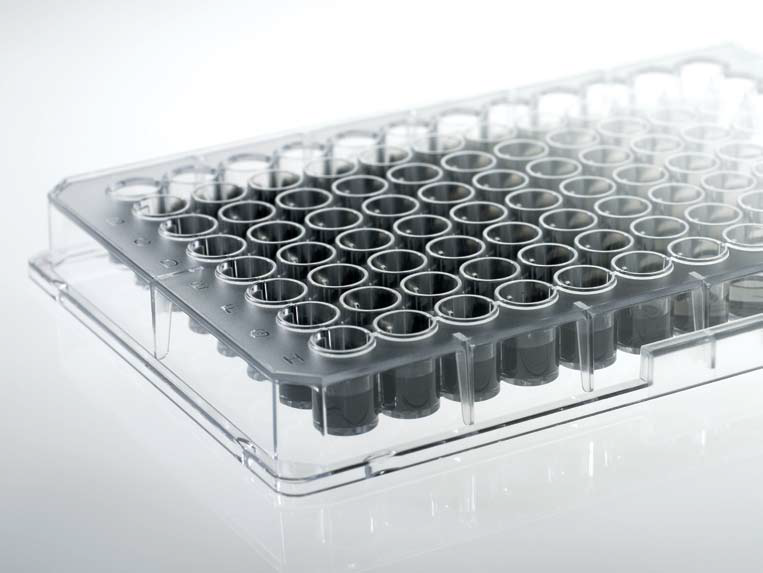 Kinetic Growth Of Bacteria
Kinetic Growth Of Bacteria
- Following the bacterial growth
- Detection via colorimetric measurement
Phases²
- During Lag Phase, bacteria adapt themselves to growth conditions. It is the period where the individual bacteria are maturing and not yet able to divide. During the lag phase of the bacterial growth cycle, synthesis of RNA, enzymes and other molecules occurs.
- The log phase (sometimes called the logarithmic phase or the exponential phase) is a period characterized by cell doubling.[3] The number of new bacteria appearing per unit time is proportional to the present population. If growth is not limited, doubling will continue at a constant rate so both the number of cells and the rate of population increase doubles with each consecutive time period. For this type of exponential growth, plotting the natural logarithm of cell number against time produces a straight line. The slope of this line is the specific growth rate of the organism, which is a measure of the number of divisions per cell per unit time.[3] The actual rate of this growth (i.e. the slope of the line in the figure) depends upon the growth conditions, which affect the frequency of cell division events and the probability of both daughter cells surviving. Under controlled conditions, cyanobacteria can double their population four times a day.[4] Exponential growth cannot continue indefinitely, however, because the medium is soon depleted of nutrients and enriched with wastes.
- The stationary phase is often due to a growth-limiting factor such as the depletion of an essential nutrient, and/or the formation of an inhibitory product such as an organic acid. Stationary phase results from a situation in which growth rate and death rate are equal. The number of new cells created is limited by the growth factor and as a result the rate of cell growth matches the rate of cell death. The result is a “smooth,” horizontal linear part of the curve during the stationary phase.
- At death phase,(Decline phase) bacteria run out of nutrients and die.
Application Criteria
Product Selection Table
To help guide you through the microplate selection process we have developed a comprehensive selection table for black pigmented plates below. Products can be sorted by item number, surface type, number of cavities, microplate material, plate type, microplate color, bottom type and volume.
Questions?
This is a comprehensive list of black pigmented microplates, if you have a specific question please feel free to contact us for more information.
Microplate Sample Program
We understand that selecting the right microplate is an important consideration and that is why we are excited to invite you to try our risk free sample program so that you can try the microplate in your laboratory before making your initial purchase.
| Item Number | Surface | Cavities | Material | Type | Color | Bottom Type | Volume |
|---|---|---|---|---|---|---|---|
| 781700 | pureGrade™ S | 1536-well | PS | Standard | Transparent | F | 10µl |
| 781680 | pureGrade™ S | 384-well | PS | Standard | Transparent | F | 100µl |
| 781663 | pureGrade™ S | 96-well | PS | Standard | Transparent | C | 350µl |
| 781662 | pureGrade™ S | 96-well | PS | Standard | Transparent | F | 350µl |